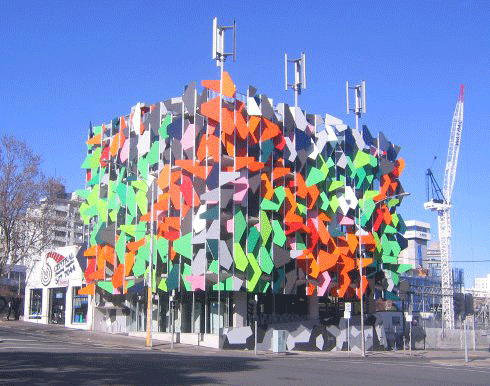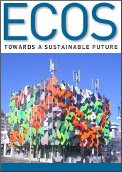
|
Published: 22 August 2011
The sustainability cost myth
Leading organisations have been implementing sustainable practice for more than 20 years. Elsewhere, however, the perception that ‘sustainability costs more’ remains a real barrier to progress. Is this perception backed by evidence, and is it likely to endure?
It’s worth investigating what ‘sustainability costs more’ means. What’s the benchmark? Is ‘cost’ being interpreted in purely dollar terms, or is it time or effort? A growing body of evidence demonstrates that sustainable business practices, products and services deliver measurably superior results compared with business-as-usual practice.
Yet, we can all point to ‘sustainable’ goods and services that cost more than a comparable alternative. Organic fruit and vegetables carry a price premium, compact fluorescent light bulbs can be 10 times more expensive than their incandescent predecessors, and the retail price of renewable energy is up to 20 per cent higher than conventional (coal-fuelled) electricity. So, the short-term price of sustainability can be higher.
However, when considering costs holistically over a longer time frame, it’s not hard to see the avoided costs associated with more sustainable practice, such as improved health, reduced energy consumption and resilience to a changing climate. The price of conventionally produced goods and services typically fails to include the costs of pollution or resource depletion borne by society at large. These consequences are seen as market and public policy failures. As these failures are corrected through new regulations, policy and pricing measures – such as a carbon tax, waste disposal costs, or water ‘buy-back’ for the environment – sustainable options quickly become financially attractive.
Many organisations are already benefiting financially from sustainability initiatives. For example, take the United Kingdom-based shampoo manufacturer [brand name withheld] operating a marginal business. The company was saved by a resource efficiency consultant who identified they were overfilling all bottles, giving away a small amount of shampoo. When corrected, the company reduced raw material and energy inputs throughout their supply chain, and returned £1 million straight to the bottom line on an annual turnover of £16 million.
Cost benefits also accrue from running more sustainable buildings. The Green Building Council of Australia reports multiple benefits, including lower operating costs, greater tenant attraction, reduced vacancy periods, improved marketability and increased property values. The Council refers to an extensive United States study that confirms these conclusions, citing a total return on investment for ‘green’ commercial building developers of 6.6 per cent.1 Tenants then benefit from lower operating costs, better staff productivity and health, and organisational reputation.
Organisations that embrace sustainability are not performing strongly just because of efficiency savings. Rather, their savvy business leaders – who recognise the benefits of embracing sustainability – are already balancing short and long-term business goals, pursuing innovation, and ensuring sound corporate governance and risk management. A. T. Kearney demonstrated that such companies have significantly outperformed their peers during ‘normal’ economic times and during the global financial crisis.2 GE, for example, established their EcoImagination division in 2005. Dedicated to sustainable solutions – including wind turbines, solar panels, electric vehicle charging stations and water purification technology – the division had out?performing sales of US$85 billion in 2010.3
In the infrastructure sector, whole-of-life cost savings are feasible. Take the example of a new, multi-billion dollar port for one of Australia’s big miners. The planning and design for the port replicated existing best practice. Yet, the facility still required large amounts of energy for handling iron ore, and materials for construction and maintenance; and, because the facility generated dust that impacted local towns, it required vast quantities of water each day for dust control. The facility also generated noise emissions and encroached on turtle breeding habitat. Through smart design, a solution was found that used ‘waste’ water and ‘just in time’ delivery to minimise onsite ore storage and double handling. This reduced energy use and noise, avoided habitat encroachment, and simplified the overall design, resulting in a lower capital and operating cost. The example illustrates a simple, important and repeatable truth; mitigating the impacts of poor design costs money, while smart design from the outset saves money.
Sustainable goods and services may cost a little more if viewed from narrow, short-term perspective. But, over the long term, sustainability is proven to be financially attractive. This equation continues to improve as community expectations and science underpins public policy and market reforms. Great returns on investment are now available to those organisations which embrace sustainability with an eye on market opportunities and smart, sustainable design.
Dr Nick Fleming is the Chief Sustainability Officer for Sinclair Knight Merz, leading the application of sustainability thinking in business operations and client services. Through his Sustainable Enterprise column, Nick provides insight into how businesses and organisations are effectively putting sustainability theory into practice.

|
| Dr Nick Fleming |
1 Green Building Council of Australia (2008) The dollars and sense of green building.
2 AT Kearney (2009) Green winners – the performance of sustainability-focused companies during the financial crisis. 2nd Annual Green Marketing Forum.
3 GE (2010) EcoImagination Annual Report – Solutions for the World’s Toughest Challenges.




